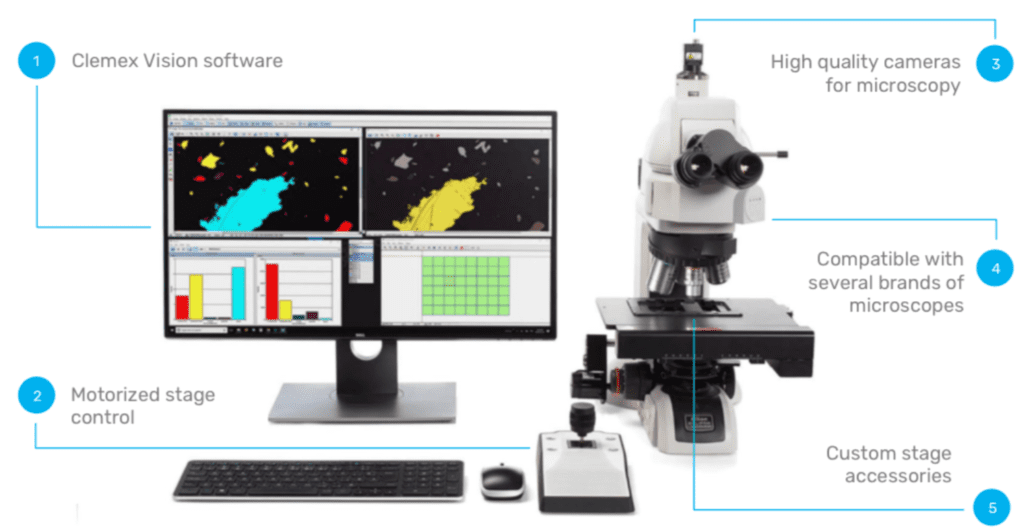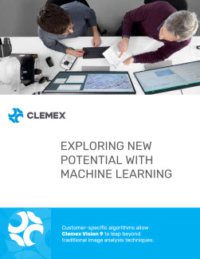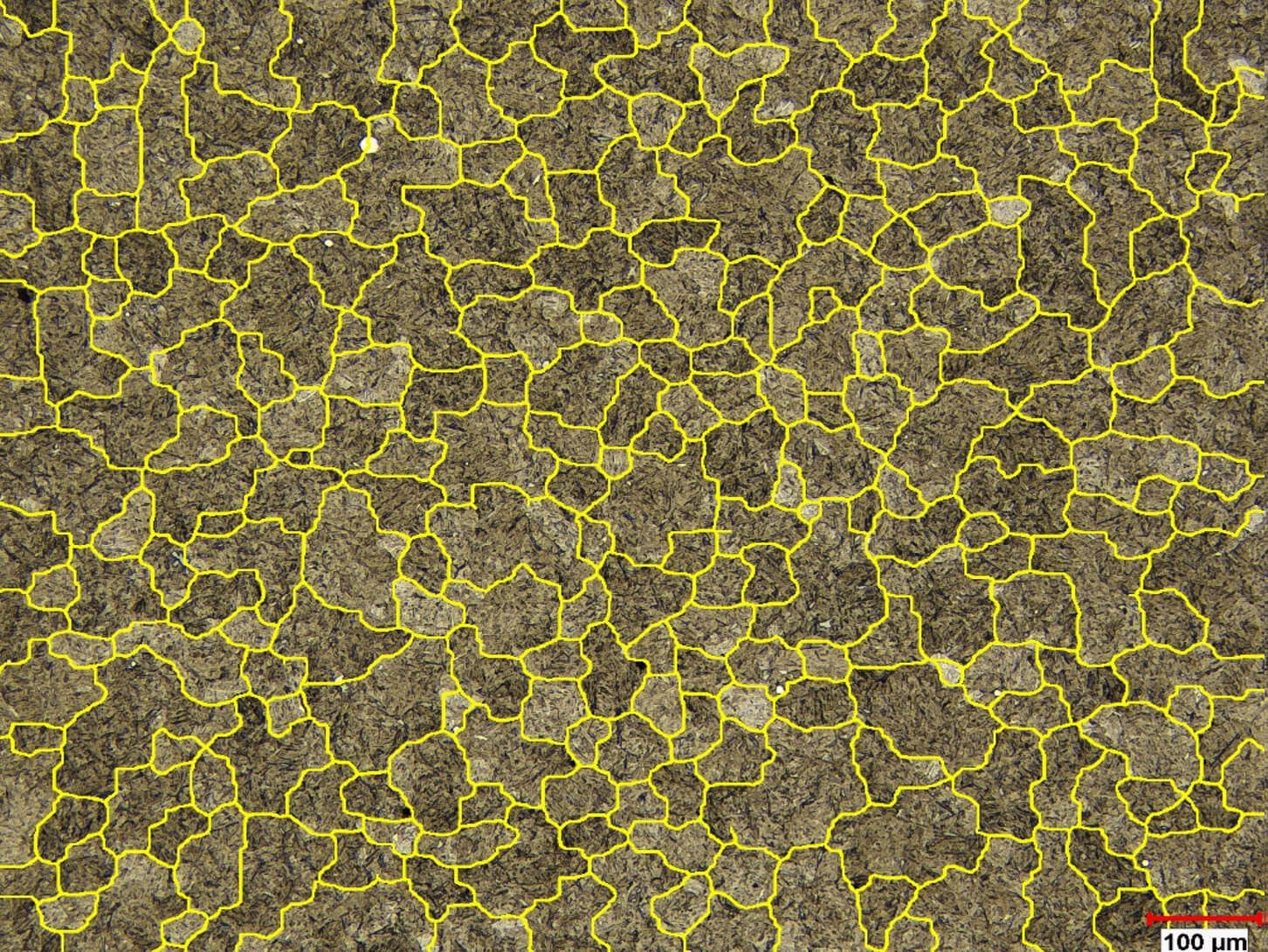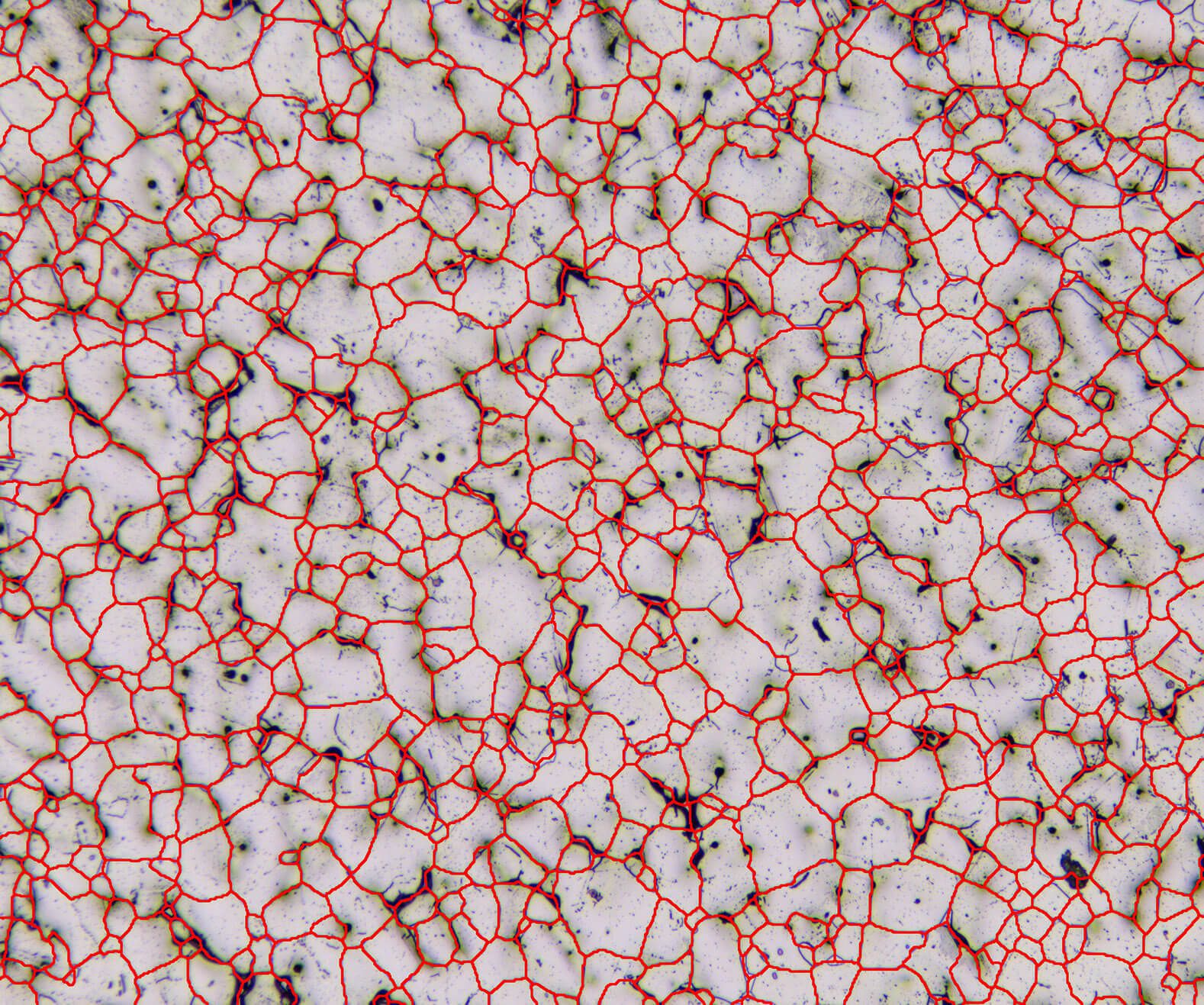EXPLORING NEW POTENTIAL WITH MACHINE LEARNING
Customer-specific algorithms allow Clemex Vision to leap beyond traditional image analysis techniques. Machine Learning (ML) has started to play a key role in enhancing image analysis routines. These new techniques substantially improve the throughput of complex image analysis by further automating traditional threshold-based techniques.
- Automated Image Analysis
Take advantage of 30 years of experience in developing routines for various applications in our reputed software. - Customer Developed Algorithms
Clemex integrates, develops and optimizes Python code for customers who wish to use their own methodology. - Artificial Intelligence
New instructions based on machine-learning algorithms are used seamlessly in Clemex Vision 9 or upgraded software.
FASTER AND SIMPLER
The most recent version of Clemex Vision now leverages ML capabilities, including special instructions for martensitic, ferritic, and austenitic grains. These new automatic algorithms are integrated into the existing software’s toolbox to provide a fast and reliable way of optically identifying challenging microstructures.
The impact of machine-learning on existing systems
Clemex customers who have a valid license and a ClemexCare contract can simply update their software and start using the new instructions in the Toolbox. Although their existing workflow remains unchanged, the new ML instructions will make their image analysis routines substantially less complex and therefore a great deal more efficient. Users need only to set the algorithm parameters once, then run the analysis routine on any number of samples.

SET ALGORITHM PARAMETERS
This is usually done once for each type of analysis. The algorithm is powerful enough to take into account light and shading variability. Adjustments are minimal.

RUN ANALYSIS ROUTINE
Using our image analysis software is as easy as before. New instructions such as the Martensitic tool are seamlessly integrated into analysis routines.

REVIEW YOUR REPORT
Results are available for review onscreen before saving in .xlsx or .pdf format. Data related to each grain can be individually traced and validated.
Advantages of machine learning over traditional image analysis techniques
There are two main advantages of routines containing ML algorithms over those using traditional image analysis techniques only. Firstly, it is now possible to detect microstructures that are difficult to analyze optically. For example, martensitc steel is especially hard to analyze because of the materials’ resistance to etching techniques.
 Martensitic grains without ML detection
Martensitic grains without ML detection
 Martensitic grains with ML detection
Martensitic grains with ML detection
In other applications, such as Pearlite-Ferrite Area Percent, ML algorithms greatly simplify the existing image analysis routine. The detection in these applications is no longer done using the Threshold method, which usually requires many fine-tuning instructions, but is performed in a single step which dramatically reduces the time spent on each field. Additionally, fewer user-defined manipulations also mean a more robust routine, which allows for variations in luminosity.
- Simple workflow
The no-threshold method is a quick and easy way of detecting grain boundaries automatically. - Robust
Repeatable detection of grains without visible boundaries even with light intensity variation - Reproducible
The method minimizes inter-operator variability and increases reproducibility. - Accurate
Successfully tested on hundreds of images in collaboration with a leading industry partner. - Fast analysis
Once the parameters are set, the algorithm is deployed on each field of the sample at high speed.
MORE WAYS TO OBTAIN VALID DATA
More automation has been added for the sake of simplicity. Clemex systems evolve with your requirements thanks to new routines and ML instructions developed by our team of specialists.

APPLICATION PACKAGES
These contain a number of pre–built routines for a certain type of application.
- Grain Size
- Layer Thickness
- Particle Sizing
- Phase Analysis
- DAS

CUSTOM ROUTINES
Image analysis routines can be built by research laboratories or expert Clemex staff using the extensive library of instructions. Previous projects include:
- Mean Linear Dendrite Spacing
- Automated analysis of laser grooves on wafers
- Binary image histomorphometry in nerve assessment

MACHINE-LEARNING BOOST
Development of analysis routines by our specialists now has the added advantage of machine-learning. Existing routines can be reviewed and improved by our staff using the latest tools. Contact our team for more information here.
FUTURE IMAGE ANALYSIS NEEDS
New features and algorithms allow you to keep existing equipment longer with regular software releases and a new bridge to machine learning (or ai) capabilities. Hardware components can be added or replaced to adapt to new specifications. The value of your initial investment is therefore maintained.


Download PDF brochure





